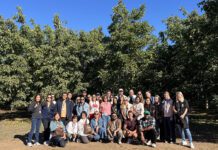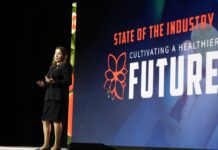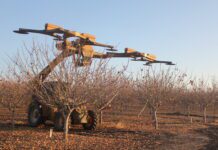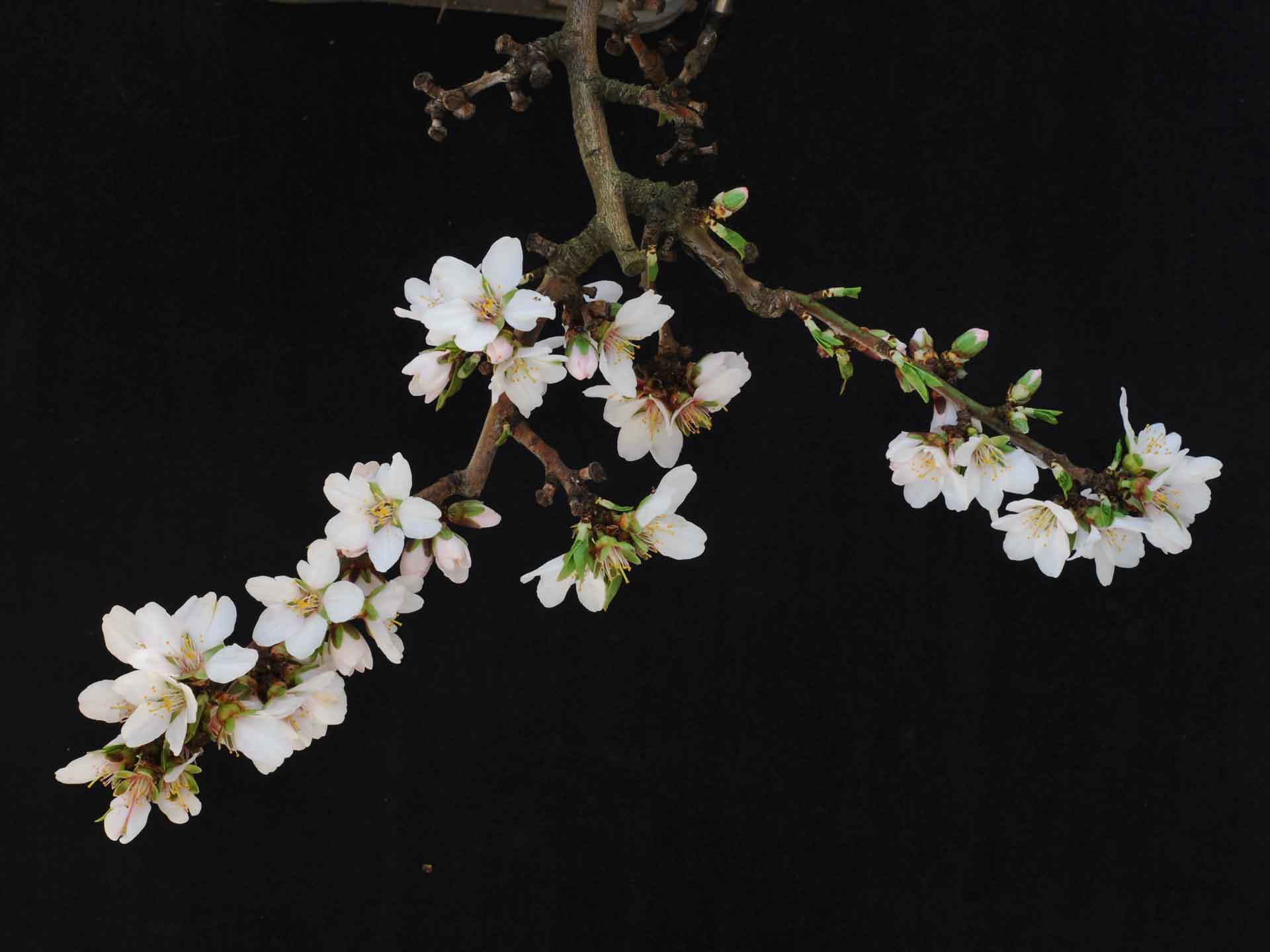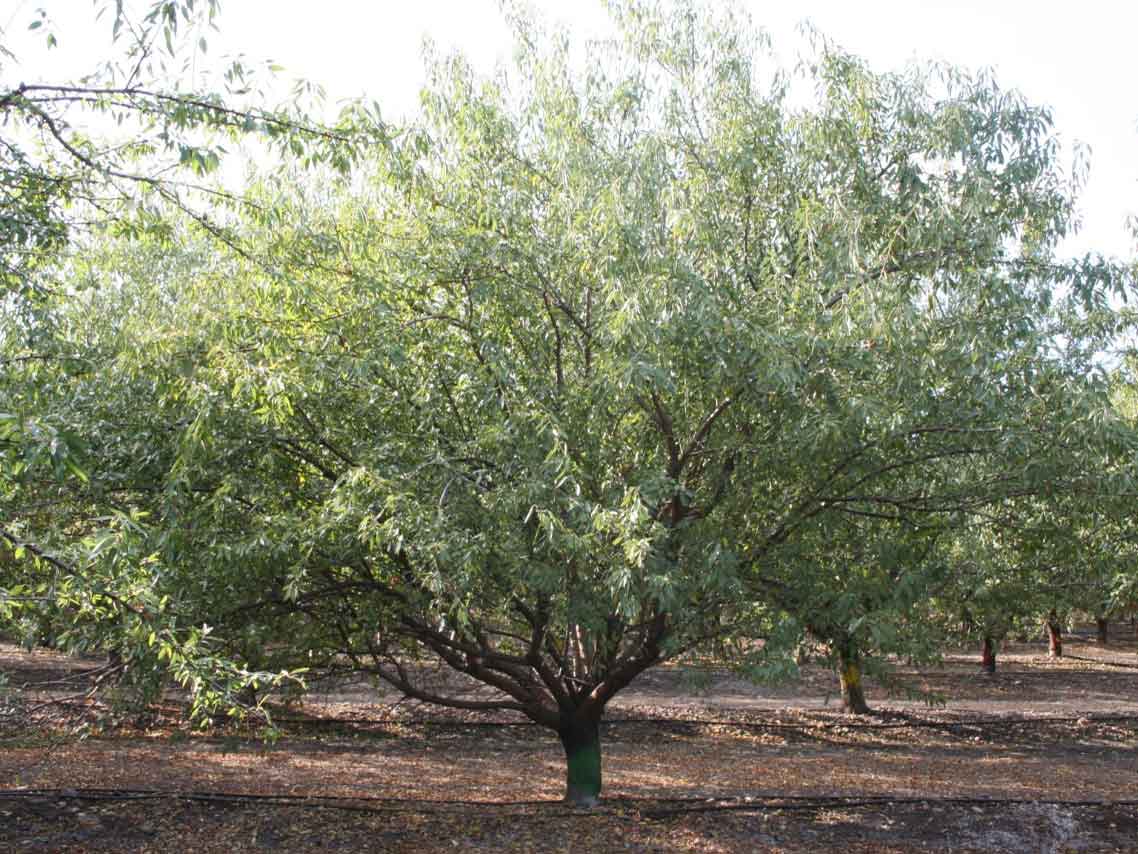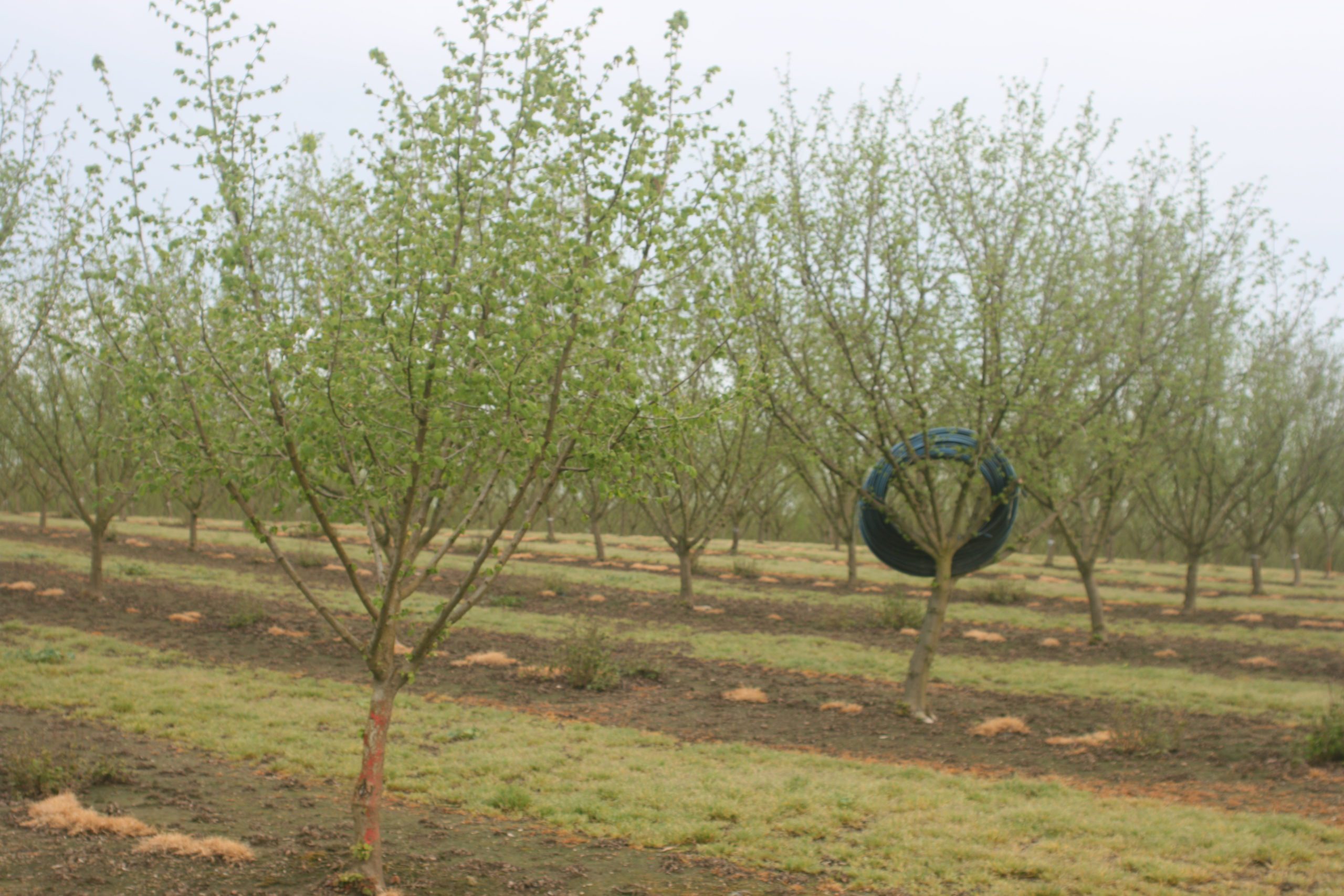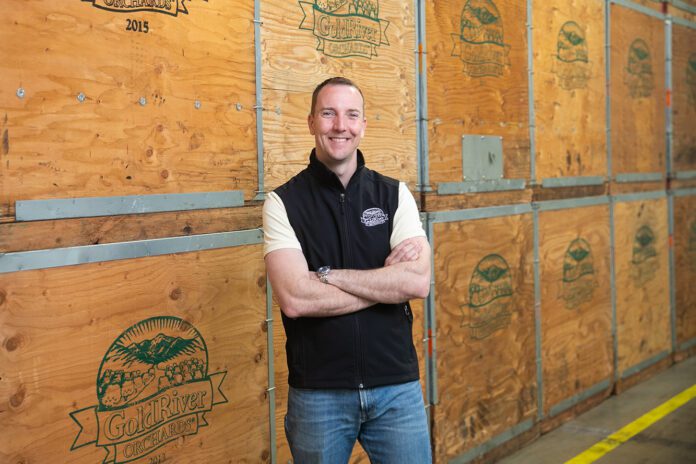
Listen to the audio version of this article. (Generated by A.I.)
Jeremy Barton’s family has a more than 100-year history growing walnuts in California that began when his great-great-grandfather hopped a boxcar and made his way west. But Barton’s branch of the family didn’t immediately get involved in the family business.
Other than summertime visits to the family farm, Barton did not grow up on the farm. In 2003, Barton’s dad returned to California to take on a role at The Barton Ranch, and Barton himself would not come back to run Gold River Orchards, the processing side of the business, until two years ago.
“Up until that point, my family and I moved all over the U.S., and I went to school in Georgia,” Barton said. “I started my career at IBM and worked in the wine industry for about 12 years before coming back to the family business.”
Barton’s uncles ran the ranch, and his grandfather was president of Diamond Walnuts in the 1990s and was instrumental in the decision to add walnut handling to the family’s business portfolio.
“Right around the time he retired from Diamond is when they decided to invest in Gold River and vertically integrate into the walnut handling and processing operation,” Barton said.
Having spent time in industries outside of agriculture, Barton brings a unique perspective to the table and is exploring some outside-the-box opportunities for walnuts. We asked him to share his perspective on the walnut industry with West Coast Nut.
“Other than just snacking on it, what else can we do with this to make the word ‘walnut’ and the concept of a walnut more prevalent?”
– Jeremy Barton, grower/processor
Q. Tell us a little bit about your family’s history in farming.
Barton Ranch has been around since 1912, and my brother and I are the fifth generation of Barton Ranch managers. I guess I’m technically not a Barton Ranch manager because I manage Gold River Orchards, which is our handling or processing arm of the business.
My great-great-grandfather came from Illinois, searched up and down California for the right plot of land, found a plot of land in Escalon, California, in 1912, and started planting orchards at that time. And we’ve been in the business since then. We’ve been growing walnuts and other crops for a little over 100 years now.
If you come visit Gold River, in our foyer, we have one of the original Barton hullers. My great-grandfather invented the huller, and so the original huller was a Barton huller. It’s kind of cool to have an example of the original hullers sitting in the foyer of your plant when we’re no longer in that manufacturing business.
Q. What does your operation look like now?
Walnuts make up 75% of what we grow, and it’s always been at least 75% to 80% of what we grow. We were walnuts before walnuts were cool.
Family-wide, we now have two operations. One is the farming side, which is growing. We have three primary ranches, all in the greater Modesto area. They’re walnuts, almonds and olives.
In 2003, we started Gold River Orchards, which is a handler. And so, it’s manufacturing, but we’re no longer manufacturing equipment. We’re manufacturing walnuts, if you will. We’re processing walnuts. We purchase our own crop from our farming operation, and we also work with about 125 other growers to primarily shell their walnuts and market those across the world.
Q. Why did your family decide to get into processing as well as growing?
Without going into the entire history, when Diamond went public in the early 2000s, the change from a co-op model to the public model created an opportunity for self-determination. And my grandfather, who loved the processing side of the business, thought it’d be a really good idea for us to vertically integrate at that time.
We could have control of our crop and how we market and process and ideally provide a lot of value to grower neighbors and partners to help develop alternative marketing efforts to just Diamond at that time, who was the lion’s share of the market.
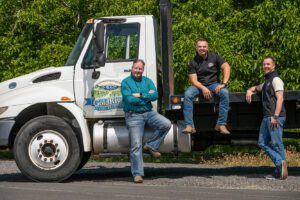
Q. Talk a little bit about the walnut market.
The last three years have been quite volatile. The crop year 2022, we had a severe heat event late in the summer, which damaged the quality of the crop. And it was a really tough crop to market because it was far outside the norm of quality standards for California.
The following year, the quality was excellent, but it was the largest crop on record. So, we had an oversupply challenge to work through. And then this most recent crop was also good quality, but the most severe shortfall from the previous year that we’ve ever seen.
So, each year has given us a different marketing challenge that we’ve had to navigate. We’re hoping that crop year 2025 might be somewhere closer to a mean, so that we can focus more on efficiencies, yields and investment in technology in the plant to improve what we’re doing from an efficiency standpoint.
And then on the marketing side, try to push more into retail and try to push more into value-added offerings rather than just holding on to the bucking bronco each year so we can create more value out of the walnut and not just focus on the commodity element of it.
Q. How do you do that?
First and foremost, on just the processing side, you find the right team and technology to minimize how much you beat up the walnut.
The beauty of walnuts is they have a lot of oil content. They’re very healthy. You have to be much more gentle with it when you process it, so the first way you create value is to not destroy value in the processing/manufacturing process.
The second part of that is then turning around and explaining to buyers what makes a walnut different than other nuts, not just the health content, but the flavor content. You’re not buying a commodity. You’re buying a different variety, or you’re buying a different spec.
Understanding end use for the different walnuts is critical to monetize and get the best value for each buyer of what they’re looking for. There are all these different ways to use it. Finding the right use case for your end buyers is a critical way to lift the price of walnuts. Then the extension of that that we’re starting to dabble in is: What kind of finished goods can we create that help people think about walnuts more often?
I came from wine. I’ve got beverage on the mind. We had a ton of amber walnuts from the 2022 crop because it got heat damaged. We went and created a walnut beer. I have a friend who’s a brewer in Sonoma, and I said, “Can we make beer with this?” He said, “I have no idea how, but let’s figure it out.”
So we figured out how to make walnut beer, and it’s great. We haven’t marketed it yet, but we’ve used that as an R&D experiment to say: Other than just snacking on it, what else can we do with this to make the word ‘walnut’ and the concept of a walnut more prevalent? Because then people will buy them and value them more.
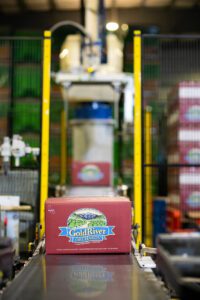
Q. What made you think of turning walnuts into beer?
We needed something fun. We needed to break the psychological spiral of the walnut market. I was new. I didn’t know any better. I used that to my advantage. I brought some walnuts to my buddies in the North Bay area and just said, “What can we do with this?”
We had some ideas of flavorings and farmers market offerings. We cracked open a beer and someone said, “Can we put it in beer? I don’t know of any walnut beers.” And the light bulb went off. We started working down that route to figure out how to do it, which is actually very complex because walnut has a lot of oil.
But we’ve found a lot of different techniques for extracting oil, for extracting flavor, that we’re now using to try to develop other products. We’ve developed a walnut bitter. And we’re closer to getting that licensed and marketed.
Q. Do you think that not growing up on the farm helps you bring an entirely different perspective to this?
It does. Innovation comes from breaking groupthink. And at a minimum, adding different perspectives to our board has allowed us to think outside the box, and I think that’s valuable.
My background in tech and wine, while ag-adjacent, was not directly related to fruits and nuts. So, bringing that in is relevant enough that it’s not completely from left field, but I get to ask a lot of dumb questions.
By asking those dumb questions, the growers get to educate me on them. Sometimes a dumb question hasn’t been asked in a long time, so we have to revalidate the answer. And we realize, “Oh, well, maybe that answer doesn’t exist anymore. It was that way two decades ago, but today it’s a little bit different.”
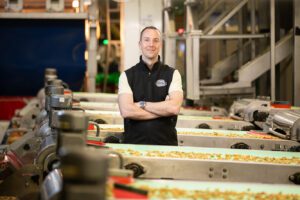
Q. Let’s talk about those challenging market conditions and the prospect of tariffs.
We export 70% of what we market. Developing various markets is a form of diversification that allows you to adjust depending on all kinds of things. We ship a lot of our product to Japan and Korea, which are premium markets. And we have deep relationships there. We’re trying to develop deeper relationships in Europe and domestically as well as Canada.
The way we approach tariffs in general is there is a lot of uncertainty with regards to the tariffs, but there’s uncertainty every day. There’s uncertainty in the climate. There’s uncertainty in supply and demand. There’s uncertainty in consumers’ approach to allergens. There’s uncertainty in exchange rates.
We deal with uncertainty every day. We’re risk managers first and foremost, and marketers second. So, these tariffs are another element and variable of uncertainty among many.
And I think what you do is you don’t overreact to them, but you just pay attention to how they’re shifting. If we see demand dropping in Germany, we have to start pivoting ahead of time to focus more on Japan.
If Japan’s exchange rate is at 160 instead of 140 and they start buying less, we have to shift more into Korea or domestically. We don’t lose sleep about it, but we also pay very close attention to all those variables so we can move our crop incrementally around the different markets we work with.
That is one of the ways a handler should be adding value for growers: being mindful of all those variables, developing a diversified portfolio where you can market that product and move that crop so that you never have all your eggs in one basket. And when a black swan event comes, you’re not toast.
“So, each year has given us a different marketing challenge that we’ve had to navigate. We’re hoping that crop year 2025 might be somewhere closer to a mean, so that we can focus more on efficiencies, yields and investment in technology in the plant to improve what we’re doing from an efficiency standpoint.”
– Jeremy Barton, grower
Q. If tariffs aren’t keeping you up at night, what is?
The summer. The summer keeps me up at night. We don’t process walnuts in the summer, so by the time we’ve finished processing in May, we finish shipping in June, and July we’re going into harvest.
Our buyers and the buying community around the world are curious: What’s going on with the current crop? Is the current crop big? Is it small? Is the nut size good? Do you think the yield’s going to be good? How’s the color going to look?
You can get field reports, and they’re great. They’ll give you acreage yield estimates from your various growers. They’ll give you acreage yield estimates from the walnut board. You can have all these variables and have a pretty good idea of the size of the crop and what the price should be.
But if you have a heat dome event in early September, it doesn’t matter what happened from May through July or August. When we have these conversations with the buying community, I always hedge our perspective that this could all change depending on what happens with the weather in July, August, September, October because color is so important to the marketing of the walnut and because heat is such a detrimental factor to the color of the walnut, that keeps me awake at night.
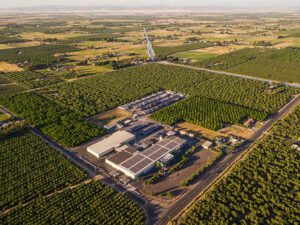
Q. What else?
When you work in international commerce, it’s not like buying and selling something on Amazon, where someone has a credit card and they put their credit card number in and they pay for something and you ship it, and you’re guaranteed to get payment.
In international business, you’re working with a lot of different countries, a lot of different customs arrangements, a lot of different laws, a lot of different cultural practices in terms of business negotiation.
What keeps me up at night most nights is when I put $100,000 of walnuts on a shipping container and put it in the Port of Oakland to go across the world, when it’s received in Israel, India, Germany, Korea. Am I going to get paid?






